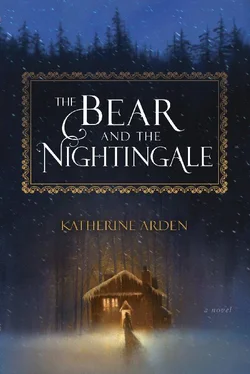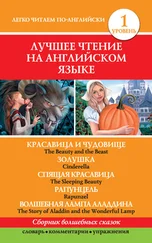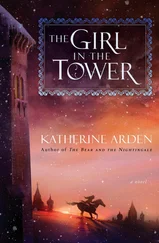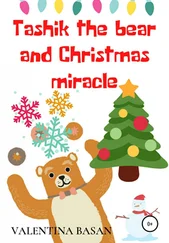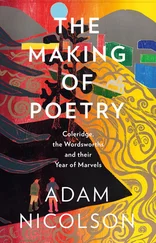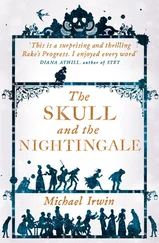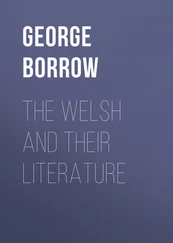BATYUSHKA—Literally, “little father,” used as a respectful mode of address for Orthodox ecclesiastics.
BOGATYR—A legendary Slavic warrior, something like a Western European knight-errant.
BOLOTNIK—Swamp-dweller, swamp-demon.
BOYAR—A member of the Kievan or, later, the Muscovite aristocracy, second in rank only to a knyaz, or prince .
BURAN—Snowstorm.
BUYAN—A mysterious island in the ocean, credited in Slavic mythology with the ability to appear and disappear. It figures in several Russian folktales.
DEVOCHKA—Little girl.
DEVUSHKA—Young woman, maiden.
DOCHKA—Daughter.
DOMOVOI—In Russian folklore, the guardian of the household, the household-spirit.
DURAK—Fool; feminine form dura.
DVOR—Yard, or dooryard.
DVOROVOI—In Russian folklore, the guardian of the dvor, or yard. Also, the janitor in modern usage.
ECUMENICAL PATRIARCH—The supreme head of the Eastern Orthodox Church, based in Constantinople (modern Istanbul).
GOSPODIN—Form of respectful address to a male, more formal than the English “mister . ” Might be translated as “lord.”
GOSUDAR—A term of address akin to “Your Majesty” or “Sovereign.”
GRAND PRINCE (VELIKIY KNYAZ)—The title of a ruler of a major principality, for example, Moscow, Tver, or Smolensk, in medieval Russia. The title tsar did not come into use until Ivan the Terrible was crowned in 1547.
HOLY FOOL—A yurodivy, or Fool in Christ, was one who gave up his worldly possessions and devoted himself to an ascetic life. Their madness (real or feigned) was believed to be divinely inspired, and often they would speak truths that others dared not voice.
ICONOSTASIS (ICON-SCREEN)—A wall of icons with a specific layout that separates the nave from the sanctuary in an Eastern Orthodox church.
IZBA—A peasant’s house, small and made of wood, often with carved embellishments. The plural is izby.
KASHA—Porridge. Can be made of buckwheat, wheat, rye, millet, or barley.
KOKOSHNIK—A Russian headdress. There are many styles of kokoshniki, depending on the locale and the era. Generally the word refers to the closed headdress worn by married women, though maidens also wore headdresses, open in back. The wearing of kokoshniki was limited to the nobility. The more common form of head covering for a medieval Russian woman was a headscarf or kerchief.
KREMLIN—A fortified complex at the center of a Russian city. Although modern English usage has adopted the word kremlin to refer solely to the most famous example, the Moscow Kremlin, there are actually kremlins to be found in most historic Russian cities.
KVAS—A fermented beverage made from rye bread.
LESHY—Also called the lesovik, the leshy was a woodland spirit in Slavic mythology, protector of forests and animals.
LESNAYA ZEMLYA—Literally, “Land of the Forest.”
LITTLE BROTHER—English rendering of the Russian endearment bratishka . Can be applied to both older and younger siblings.
LITTLE SISTER—English rendering of the Russian endearment sestryonka . Can be applied to both older and younger siblings.
MEAD—Honey wine, made by fermenting a solution of honey and water.
METROPOLITAN—A high official in the Orthodox church. In the middle ages, the Metropolitan of the church of the Rus’ was the highest Orthodox authority in Russia and was appointed by the Byzantine Patriarch.
MYSH— Mysh’ , mouse.
OGON— Ogon’ , fire.
OVEN—The Russian oven, or pech’, is an enormous construction that came into wide use in the fifteenth century for both cooking and heating. A system of flues ensured even distribution of heat, and whole families would often sleep on top of the oven to keep warm during the winter.
PODSNEZHNIK—Snowdrop, a small white flower that blooms in early spring.
PYOS—Dog, cur.
RUS’—The Rus’ were originally a Scandinavian people. In the ninth century C.E., at the invitation of warring Slavic and Finnic tribes, they established a ruling dynasty, the Rurikids, that eventually comprised a large swath of what is now Ukraine, Belarus, and Western Russia. The territory they ruled was eventually named after them, as were the people living under their dynasty. The word Rus’ has lasted into the present day, as we can see in the names of Russia and Belarus.
RUSALKA—In Russian folklore, a female water nymph, something like a succubus.
RUSSIA—From the thirteenth through the fifteenth century, there was no unified polity called Russia. Instead, the Rus’ lived under a disparate collection of rival princes ( knyazey ) who owed their ultimate allegiance to Mongol overlords. The word Russia did not come into common use until the seventeenth century. Thus, in the medieval context, one would not refer to “Russia,” but rather to the “land of the Rus’,” or simply “Rus’.”
RUSSIAN—There are two adjectives in the Russian language, russkiy and rossiyskiy, that each translate to “Russian” in English. The first, russkiy, refers specifically to the Russian people and culture without distinction or boundaries. Rossiyskiy refers specifically to the modern Russian state. When the word Russian is used in the novel, I always intend the former meaning.
SARAFAN—A dress that looks something like a jumper or pinafore, with shoulder straps, worn over a long-sleeved blouse. This garment actually came into common use only in the early fifteenth century. I included it in the novel slightly before its time because of how strongly this manner of dress evokes fairy-tale Russia to the Western reader.
SOLOVEY—Nightingale.
STARIK—Old man.
SYNOK—An affectionate diminutive derived from the word syn, meaning “son.”
TSAR—The word Tsar is derived from the Latin word Caesar, and originally was used to designate the Roman emperor ( imperator ), and later the Byzantine emperor, in Old Church Slavonic texts. In this novel, therefore, the word Tsar refers to the Byzantine emperor in Constantinople (or Tsargrad, literally “city of the tsar”) and not to a Russian potentate. Ivan IV (Ivan the Terrible) was the first Russian Grand Prince to take the title Tsar of All the Russias, almost two hundred years following the fictional events of The Bear and the Nightingale. Russian rulers assumed the title of Tsar, because, following the fall of Constantinople to the Ottomans in 1453, they considered Moscow to be the “Third Rome,” the heir of Constantinople’s spiritual authority among Orthodox Christians.
TSARGRAD—“City of the tsar” Constantinople (see above).
UPYR—Vampire (pl. upyry ).
VAZILA—In Russian folklore, the guardian of the stable and protector of livestock.
Читать дальше
